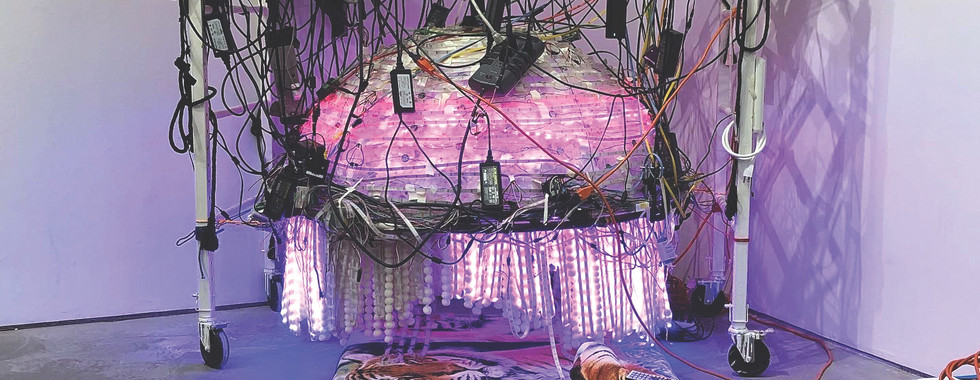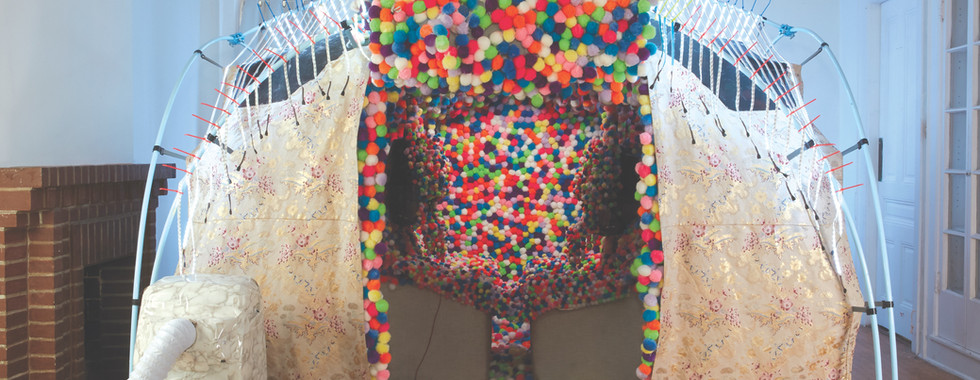Exploring the Intersection of Art and Wellness: Bobby Anspach's Legacy and the Future of Healing Technologies
- MINDED
- Aug 25, 2024
- 3 min read

In a rapidly evolving world, where wellness and technology often intersect, the legacy of the late artist Bobby Anspach is finding new life. Anspach, a visionary who created unique sound-light machines, sought to merge art with therapeutic practices. These machines, which might look like DIY sci-fi creations on the outside, provide a deeply immersive experience aimed at promoting mental and emotional well-being. Today, thanks to the efforts of the Bobby Anspach Studios Foundation and the Reality Center, his work is being re-examined and reimagined for broader therapeutic applications.
The Intersection of Art and Healing
Saul Ostrow, a consultant for the Bobby Anspach Studios Foundation, was instrumental in preserving Anspach's machines after the artist's untimely death at 35. Initially, the machines, with their wires, fringes, and unorthodox aesthetics, seemed destined for disposal. However, their potential therapeutic value prompted a deeper exploration.
"These machines were more than just art projects; they were Bobby's vision of healing the world, one person at a time," Ostrow explains. "He believed in inducing moments of self-awareness and wholeness through his work."
The machines are a blend of art and therapy, creating immersive experiences that engage users on a psychological level. When participants enter these devices, they undergo a three-and-a-half-minute session that often elicits powerful emotional responses—tears, laughter, or deep introspection. Ostrow notes that these moments can be transformative, offering users a rare chance to confront and understand their inner selves.

The Reality Center's Vision
Jonathan Chia, co-founder of the Reality Center, was drawn to Anspach's work after learning about it through the Foundation. The Reality Center, a sensory wellness hub and digital psychedelic lab, uses light, sound, and vibration to help individuals explore their consciousness. Chia sees a strong synergy between his center's work and Anspach's machines.
"Our goal is to make mental health and wellness accessible and engaging," Chia says. "Bobby's machines are perfect examples of how art can trick people into working on their mental health without even realizing it. They think they’re having fun, but they’re actually healing."
Chia's background as a combat veteran gives him a unique perspective on the importance of alternative therapies. After serving in Iraq, he struggled with PTSD and found solace in various healing modalities, from equestrian therapy to psychedelics. His experiences inspired him to co-found the Reality Center, where veterans and civilians alike can explore new ways to address mental health challenges.
The Future of Wellness Technology
The collaboration between the Bobby Anspach Studios Foundation and the Reality Center highlights the growing recognition of art as a tool for healing. While the Foundation preserves the artistic integrity of Anspach's work, it is also exploring how these machines can be adapted for broader use. Plans include fabricating replicas, creating digital derivatives, and potentially integrating the technology into virtual reality (VR) experiences.
"We're looking at how to make Bobby's vision accessible to everyone," Ostrow explains. "Whether it's through physical replicas or digital adaptations, we want to continue his mission of promoting wellness through art."
Chia is equally optimistic about the potential of Anspach's machines. "We know they work," he says. "The challenge now is to gather the data and research needed to bring these technologies to a wider audience."
Both Ostrow and Chia believe that Anspach's work has the potential to bridge the gap between art and science, offering new ways to address mental health and wellness. As they continue to explore the possibilities, the legacy of Bobby Anspach is poised to influence a new generation of healing technologies.
As the lines between art, technology, and wellness continue to blur, the work of pioneers like Bobby Anspach reminds us of the power of creativity in healing. The Bobby Anspach Studios Foundation and the Reality Center are at the forefront of this movement, pushing the boundaries of what is possible in the realm of therapeutic art. For those interested in exploring these innovations, the future promises exciting developments that could revolutionize the way we approach mental and emotional well-being.
Follow us:
Instagram: @mindedpodcast
YouTube: Créateurs Design Association



















Comments